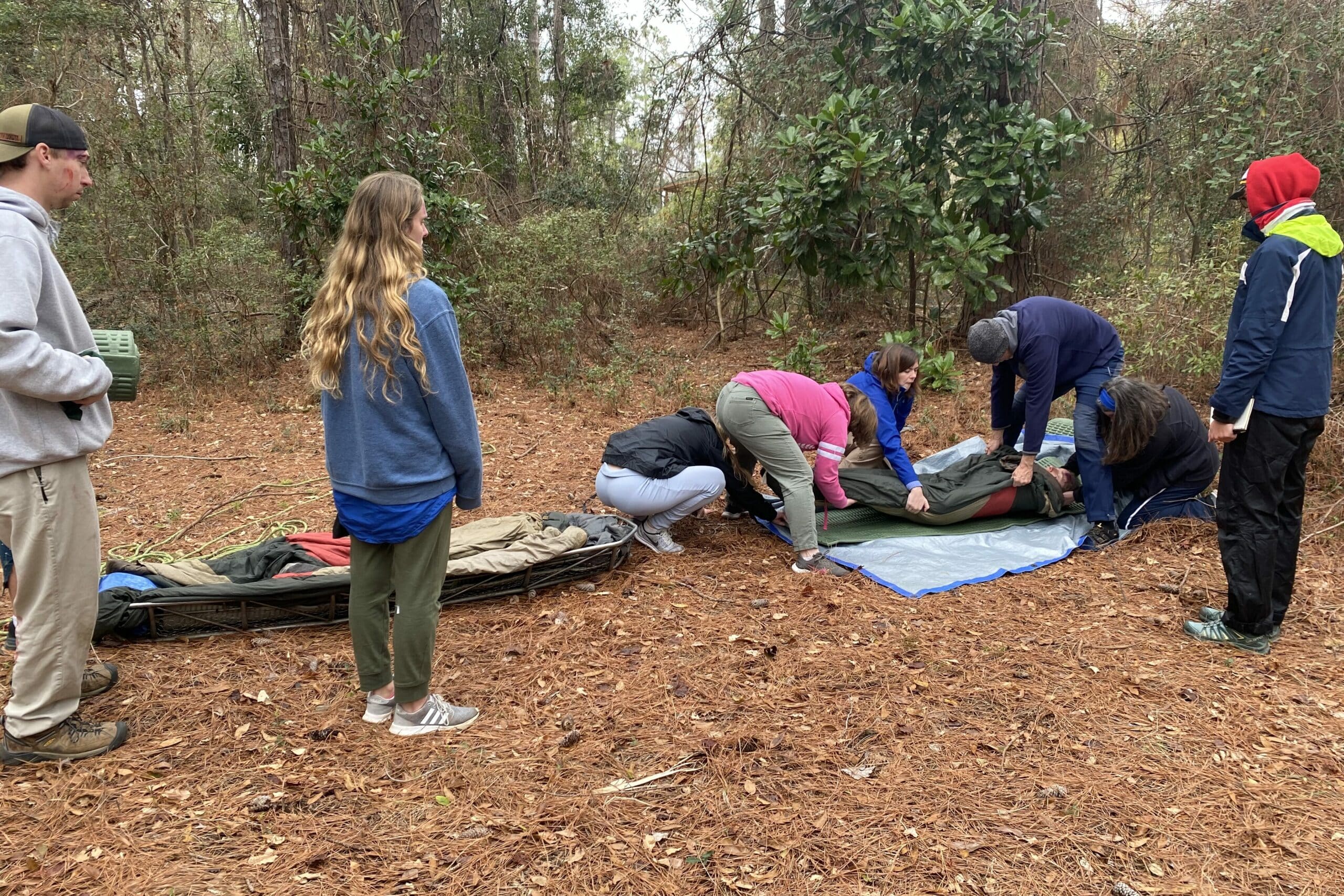New Thinking about How to Handle Spinal Injuries in Remote Wilderness Settings
Wilderness Medicine TrainingBest practices for evaluating and transporting patients with potential spinal fractures or spinal cord injuries is a hot topic in emergency medicine. And it’s no wonder. All of us who work in the adventure programming and emergency medical services field fervently want to avoid causing or worsening a potentially catastrophic injury to someone’s spinal cord.
As such, and for many decades, EMS officials dogmatically insisted that “immobilizing” patients with potential spine injuries was the best protection from further harm. Protocol demanded rigid backboards, cervical collars, head blocks, and yards of tape and straps to prevent someone who is injured from moving. However, new research suggests this is not only ineffective, but quite likely harmful.

Immobilization Dismissed as the Tool of Choice for Patient Transport
Anyone suffering a spinal injury could have a spinal fracture. And that fracture could be unstable. So, if your client (i.e., patient in this case) moved even a little bit (like turning their head), that unstable spinal fracture could slide around and cause spinal cord injury. And that spinal cord injury could cause them to be paralyzed forever.
The Old School solution was to prevent them from moving on their own. Only let trained first responders (including outdoor educators, field instructors, and guides who are certified in wilderness medicine) lift/move the injured patient. Immobilize them to a rigid device — essentially a full-body splint — and get them out of the backcountry and to a hospital.
Upon what was this edict based? Essentially nothing. A few case reports that, on closer scrutiny, don’t indicate any (more…)
In the Outdoor Industry, Affordable Housing for Outdoor Educators Remains Elusive
Outdoor EducationOne of the major “perks” of working as a field instructor, guide, or senior staff in the outdoor education and adventure-based programming sector of the outdoor industry used to be an offer of free or low-cost housing. Today, that incentive is more elusive, both for employees at our peer organizations and the staff we hire here at The National Center for Outdoor & Adventure Education (NCOAE).
Affordable staff housing — or the lack thereof — tops the list of major financial issues facing those of us who oversee the experiential education programs we run at NCOAE. Our instructors and staff come from around the globe to teach and facilitate our outdoor adventure and education programs. And for us, it has always been important that when they arrive on campus, we attempt to make sure the stress of basic needs does not overshadow the joy of the work.

Carolina Beach, North Carolina, is the closest residential area to NCOAE headquarters, featuring rents that average $1,500 a month. That’s not outrageous if you’re earning $50,000 a year and you consider 30 percent of income for rent as the gold standard for conservative budget management.
But ours is a seasonal business, and part of the problem our sector of the outdoor industry faces is that our staffers don’t make 50 grand a year. In addition, most outdoor education facilities are located in beautiful areas near state and national parks, mountains, beaches, lakes, and other open recreational spaces. Obviously, real estate and rental accommodations are much more costly in such places.
Outdoor Educators Consistently Lack Affordable Housing Options
Fortunately, NCOAE is not located in an area where rent and income gaps are so disparate that staff must move to other locations to survive. However, at the end of the day we are (more…)
TALK TO US
Have any further questions about our courses, what you’ll learn, or what else to expect? Contact us, we’re here to help!